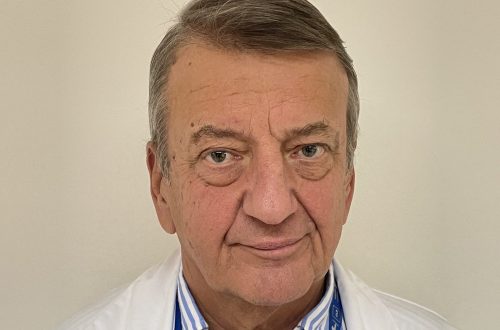Congress Newsletter 2023
Persistent Postoperative Opioid Use in Europe — Can Uniform Guidelines Stop an Opioid Epidemic in Its Tracks?
Over the past three decades, the misuse and abuse of opioid agents has cast a long shadow over healthcare systems, particularly in North America, where this public health emergency has been dubbed the opioid epidemic. Whether this shadow will expand to engulf the European nations remains to be seen. Although many European countries have recently registered upward trends in the long-term postoperative use of opioids and opioid-involved deaths, regional differences make it hard to paint a clear picture, according to data presented at the 2023 Euroanaesthesia Congress.
Providing safe, effective pain management in the era of opioid overdoses has become a challenge for healthcare professionals, said Prof. Patrice Forget, MD, Clinical Chair in Anesthesia at the University of Aberdeen, UK. For anesthesiologists, the problem is compounded by the fact that opioid substances like fentanyl are essential tools in the armamentarium used to provide analgesia and sedation during general anaesthesia or monitored anaesthesia care.
Paul Janssen’s success in synthesizing fentanyl in 1962 revolutionized the field of anaesthesia, but also ushered in an era of reliance on opioids for pain control. However, opioid agents may not be the best option for pain management in the postoperative period, especially when prescribed for long-term use, Forget noted. Data regarding the use of oxycodone for chronic pain showed that many individuals develop acute tolerance to this agent within one to two months after initiation. Attempts to overcome this phenomenon by prescribing larger doses were partly responsible for the large-scale opioid dependence in North America. Acute tolerance has also been reported with the use of ultrashort-acting remifentanil, which is a mainstay in anaesthesia practice. Moreover, this agent has been shown to cause hyperalgesia after discontinuation, leading to worse pain outcomes, particularly when used in high doses. “[We have to] question the capacity to improve pain outcomes using these opioids during surgery,” Forget said.
While opioid use has significantly increased in many European countries over the past decade, the differences in regional trends point to a multifaceted healthcare crisis, the speaker remarked. Significant increases in opioid prescriptions in countries like the United Kingdom or Germany may suggest overprescribing practices, whereas some Eastern European countries may still have to overcome inadequate access to opioid agents.
Data gathered since 2015 have also revealed regional differences within the United Kingdom, according to Forget, who coordinates the activities of the PANDOS ESAIC Research Group. Between 2015 and 2020, the volume of opioid prescriptions has remained stable in England, with pronounced regional differences. Scotland has witnessed a massive increase in the number of opioid-involved deaths since 2013, a phenomenon that worsened during the COVID-19 pandemic because of the limited access to addiction medicine services. “There is definitely an entire generation that has been, during the last decades, exposed to opioids,” Forget said. “Some of these [individuals] are now dying from opioid-related [causes].”
Although many regions in Europe lack high-quality data about opioid prescribing practices and their outcomes, safe pain management remains a goal rather than a reality across Europe, which is not immune to the risk of opioid dependence. “We have much to learn from each other,” Forget said, noting that the heterogeneous information gathered from different regions creates a complex picture that is hard to analyze.
A systematic review of persistent postoperative opioid use in Europe, co-authored by Forget, showed that between 2% and 41% of patients were opioid users three months after surgery. In nine of the 12 included studies, individuals who had undergone total hip or total knee arthroplasties reported opioid use rates between 8% and 41% after three months. While these limited data reveal trends, they do not tell the whole story, Forget said. Even when available, the numbers do not reflect patients’ quality of life, efficacy of opioids in treating chronic pain, or risk factors for intravenous drug use, such as exposure to high doses.
Public health data from Scotland have also shown that opioid-related mortality peaks within 12 weeks of hospital discharge. But in the absence of uniform guidelines, European practitioners must exercise clinical judgment when it comes to pain management post-discharge from the hospital. In some countries, such as the United Kingdom, clinicians can rely on national guidelines for the perioperative care of adults. The National Institute for Health and Care Excellence guidelines emphasize multimodal analgesia and promotion of early functional return, rather than placing pain intensity at the center of the equation. “Physical status is important even if pain intensity is something that should be considered, especially when trying to individualize and consider patient choice,” Forget said. “We need to try to balance the risks and benefits of opioid prescriptions. Maybe one size does not fit all, maybe we should personalize better and progress to a realistic medicine approach.”
The absence of European guidelines on perioperative pain management is an obstacle to the implementation of non-opioid and opioid-sparing strategies for pain control, the speaker noted. The PANDOS ESAIC Research Group has been formed to investigate the role of opioids in perioperative care and generate recommendations that can guide protocol in hospitals across Europe. A rational approach to perioperative analgesia requires rooting out unnecessary prescribing practices without creating obstacles to optimal pain management, Forget concluded.










